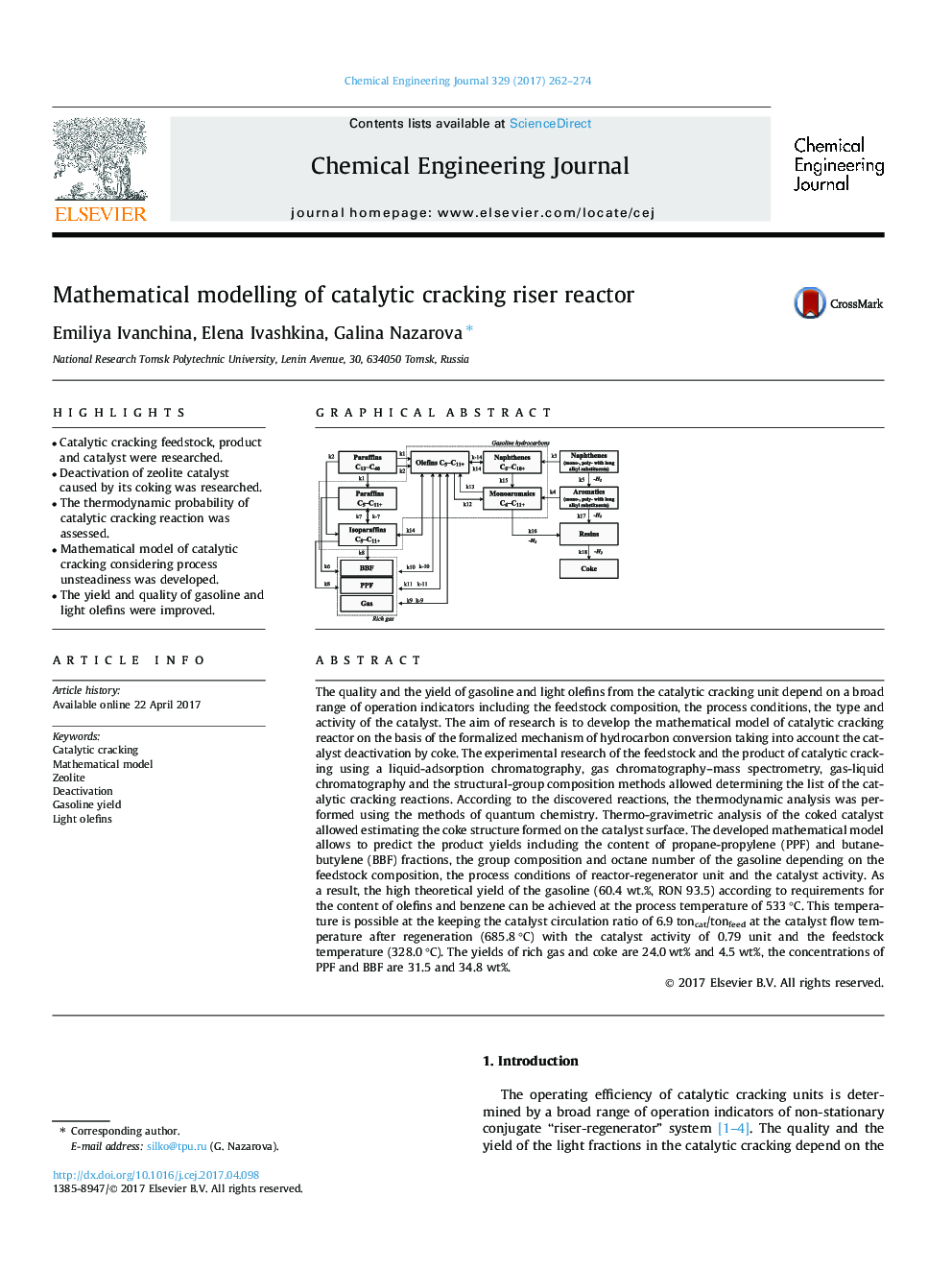| کد مقاله | کد نشریه | سال انتشار | مقاله انگلیسی | نسخه تمام متن |
|---|---|---|---|---|
| 6465422 | 1422949 | 2017 | 13 صفحه PDF | دانلود رایگان |
- Catalytic cracking feedstock, product and catalyst were researched.
- Deactivation of zeolite catalyst caused by its coking was researched.
- The thermodynamic probability of catalytic cracking reaction was assessed.
- Mathematical model of catalytic cracking considering process unsteadiness was developed.
- The yield and quality of gasoline and light olefins were improved.
The quality and the yield of gasoline and light olefins from the catalytic cracking unit depend on a broad range of operation indicators including the feedstock composition, the process conditions, the type and activity of the catalyst. The aim of research is to develop the mathematical model of catalytic cracking reactor on the basis of the formalized mechanism of hydrocarbon conversion taking into account the catalyst deactivation by coke. The experimental research of the feedstock and the product of catalytic cracking using a liquid-adsorption chromatography, gas chromatography-mass spectrometry, gas-liquid chromatography and the structural-group composition methods allowed determining the list of the catalytic cracking reactions. According to the discovered reactions, the thermodynamic analysis was performed using the methods of quantum chemistry. Thermo-gravimetric analysis of the coked catalyst allowed estimating the coke structure formed on the catalyst surface. The developed mathematical model allows to predict the product yields including the content of propane-propylene (PPF) and butane-butylene (BBF) fractions, the group composition and octane number of the gasoline depending on the feedstock composition, the process conditions of reactor-regenerator unit and the catalyst activity. As a result, the high theoretical yield of the gasoline (60.4 wt.%, RON 93.5) according to requirements for the content of olefins and benzene can be achieved at the process temperature of 533 °C. This temperature is possible at the keeping the catalyst circulation ratio of 6.9 toncat/tonfeed at the catalyst flow temperature after regeneration (685.8 °C) with the catalyst activity of 0.79 unit and the feedstock temperature (328.0 °C). The yields of rich gas and coke are 24.0 wt% and 4.5 wt%, the concentrations of PPF and BBF are 31.5 and 34.8 wt%.
132
Journal: Chemical Engineering Journal - Volume 329, 1 December 2017, Pages 262-274
